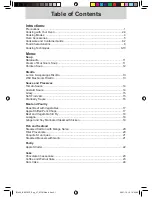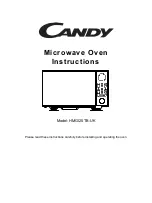
- 10 -
Cooking Techniques
Turning:
It is not possible to stir some
foods to redistribute the heat. At times
microwave power will concentrate in
one area of a food. To help ensure even
cooking, some foods need to be turned
over once, halfway through cooking.
Stirring:
Stirring is usually necessary
during microwave cooking. We have
noted when stirring is helpful, using
the words once, twice, frequently or
occasionally to describe the amount of
stirring necessary.
Rearranging:
Rearrange small items
such as chicken pieces, shrimp, or
hamburger patties by moving pieces
from the edge to the centre and pieces
from the centre to the edge of the dish.
Stand Time:
Most foods will continue
to be cooked by conduction after
microwave cooking. In meat cookery,
the internal temperature will rise
5°F - 15°F (3°C - 8°C) if allowed
to stand, tented with foil, for 10-15
minutes. Casseroles and vegetables
need a shorter stand time, but it is
necessary to allow foods to complete
cooking in the centre without
overcooking on the edges.
Testing for Doneness:
The same
tests for doneness used in conventional
cooking may be used for microwave
cooking. Meat is done when fork-tender
or splits at
fi
bers. Chicken is done when
juices are clear yellow and drumstick
moves freely. Fish is done when it
fl
akes and is opaque.
IP1430_B8S70CP_Eng_07_071015.indd Sec1:10
IP1430_B8S70CP_Eng_07_071015.indd Sec1:10
2007-10-15 14:02:26
2007-10-15 14:02:26











































